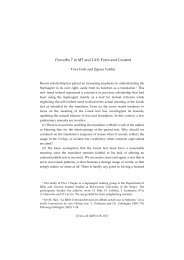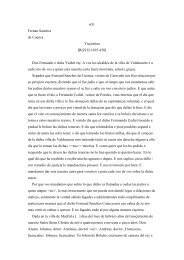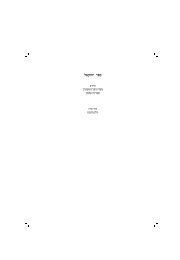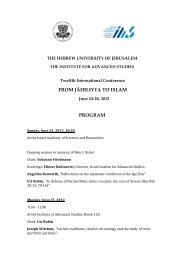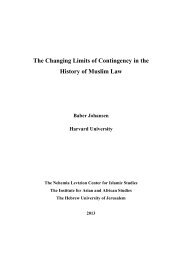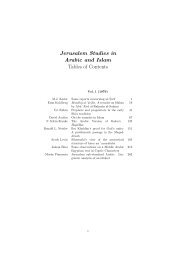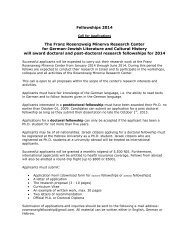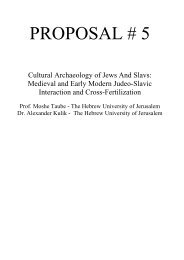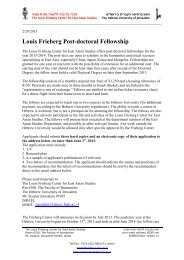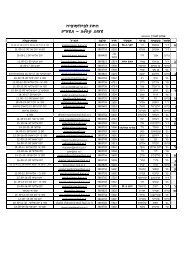THE BOOK OF EZEKIEL Moshe H. Goshen-Gottstein Shemaryahu ...
THE BOOK OF EZEKIEL Moshe H. Goshen-Gottstein Shemaryahu ...
THE BOOK OF EZEKIEL Moshe H. Goshen-Gottstein Shemaryahu ...
You also want an ePaper? Increase the reach of your titles
YUMPU automatically turns print PDFs into web optimized ePapers that Google loves.
APPENDIX<br />
Open and Closed Sections<br />
In the present edition sections in the Hebrew manuscripts were recorded in the apparatuses<br />
according to the type of the sources. In Apparatuses II and III the siglum § indicates an<br />
interval functioning as a marker of a new sense unit, without differentiating between types<br />
of intervals (i.e. whether “open” or “closed” sections, in masoretic terms). Such intervals<br />
were recorded only in instances in which there was no correspondence between ` and other<br />
manuscripts, that is when an interval was present in a manuscript but lacking in `, or when<br />
present in ` but lacking in a given manuscript.<br />
In Apparatus IV sections are treated differently, because the affiliation of a masoretic<br />
codex (e.g. to the Ben Asher tradition) depends – among other factors – on the (dis)agreement<br />
in reference to sections. Therefore in this apparatus sections were recorded with the<br />
indication “closed” (q) or “open” (t).<br />
The following table presents an overview of the material. It includes all intervals, specifying<br />
“open” and “closed” types, in all extant sources: Judean Desert scrolls, recorded in<br />
Apparatus II; the complete manuscripts and Geniza fragments, recorded in Apparatus III;<br />
and the manuscripts recorded in Apparatus IV. * As a rule, a blank cell indicates a lacuna in<br />
the manuscript, and means that it could not be determined whether a “closed” or “open”<br />
section is involved. Lack of a section is marked by the symbol > (or ].<br />
Corrections in section markings are indicated by the sigla used in apparatus IV: a single<br />
apostrophe marks the original or prima manus reading; a double apostrophe marks the corrected<br />
or secunda manus reading. Thus e.g. "t 'q means that the manuscript originally had<br />
a closed section, but later was corrected to an open section. Doubtful readings, which usually<br />
are due to the poor preservation of a manuscript, or cases in which the nature of the<br />
correction could not be defined, are marked by a question mark (?).<br />
The symbols used in the table:<br />
t<br />
dgezt dyxt<br />
open section (a blank interval, followed by a text at the beginning of a new line)<br />
q dnezq dyxt<br />
closed section (a blank interval in the middle of a line followed by a text)<br />
^ weqt rvn`a dwqt, a section within a verse<br />
' prima manus (before a correction)<br />
" secunda manus (after a correction)<br />
? dubious reading<br />
* The table of sections in MSS recorded in apparatus IV is justified to the right, like the apparatus itself.<br />
xlix



